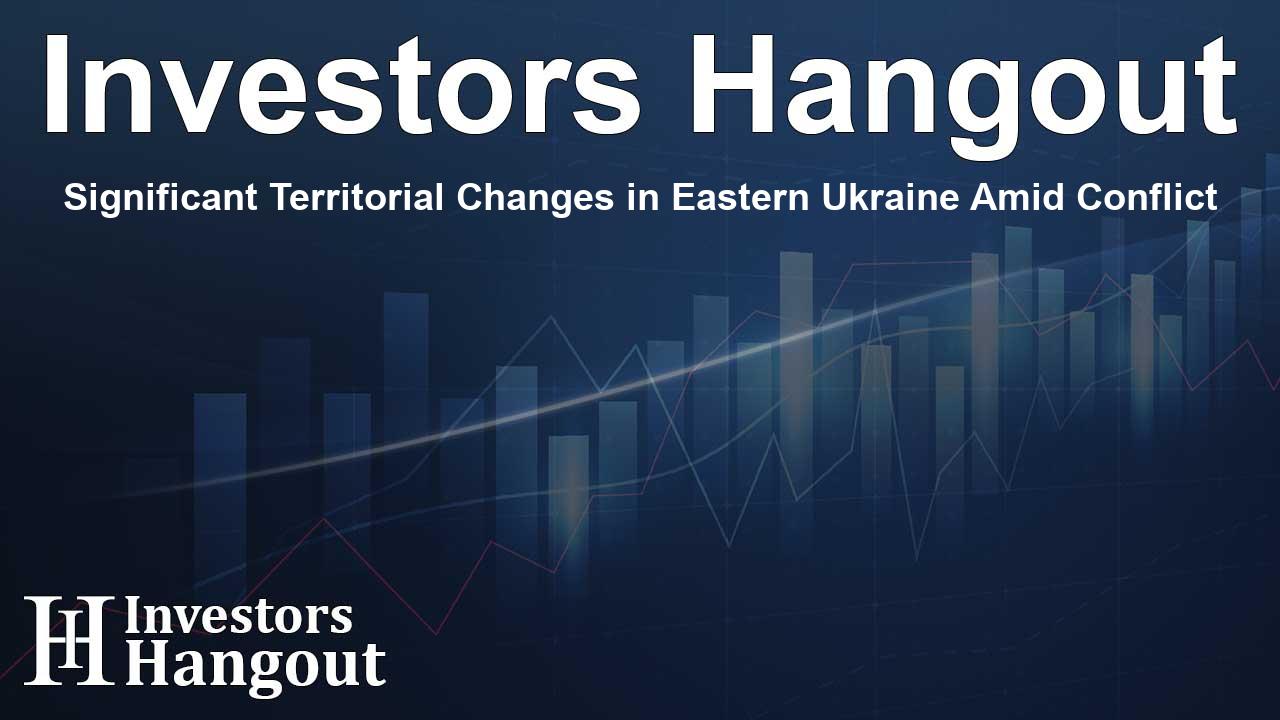Significant Territorial Changes in Eastern Ukraine Amid Conflict

Recent Developments in the Ukraine-Russia Conflict
Recent reports indicate that Ukraine has lost more than 40% of the territory it previously controlled in a significant incursion into Russia's Kursk region. This territory was captured as part of a surprise offensive. A senior Ukrainian military official confirmed that ongoing counterattacks by Russian forces are responsible for this loss.
Military Dynamics in the Conflict Zone
The military source from Ukraine's General Staff revealed that Russia has deployed a substantial number of troops—approximately 59,000—to the Kursk region. This buildup follows Ukraine’s rapid advance, which originally caught Russian forces off-guard as the conflict entered its third year. At one point, Ukrainian forces controlled around 1,376 square kilometers (531 square miles) of territory, but now control has dwindled to approximately 800 square kilometers (309 square miles). This reduction underscores the intense military engagement currently unfolding.
Strategic Intentions Behind the Incursion
Kyiv's initial thrust into the Kursk area was strategically motivated, aiming to deter Russian forces by forcing them to pull back from eastern Ukraine while enhancing Ukraine’s stance in any future negotiations. However, Russian troops continue to make significant advances in the eastern Donetsk region, demonstrating their ongoing operational capabilities.
Statements from Ukrainian Leadership
President Volodymyr Zelenskiy expressed concerns regarding Russian tactics, indicating that President Vladimir Putin's primary goals include full occupation of the Donbas region, which encompasses Donetsk and Luhansk, and expelling Ukrainian forces from the Kursk territory. Zelenskiy stressed that a successful operation in Kursk would be crucial for Putin, particularly as the geopolitical dynamics shift with upcoming leadership changes in the U.S.
The Role of External Military Support
Adding to the complexity of the situation, there have been claims that approximately 11,000 troops from North Korea have arrived in support of Russian efforts in the Kursk region. However, these numbers and the state of their training remain unverified, as the Russian Defense Ministry has not confirmed the details of this development.
Challenges Facing Ukrainian Forces
Currently, the Kurakhove region poses the greatest threat to Ukrainian defenses, with Russian forces advancing rapidly. The strategic town of Kurakhove serves as a vital point linking to the logistical hub of Pokrovsk in the Donetsk area. The ongoing fighting and troop movements indicate a potentially changing landscape as the conflict continues to develop.
Ukraine's Tactical Response
In light of these developments, Ukraine is actively working to disrupt Russian logistics and supply lines, targeting military installations, ammunition depots, and airfields. Recently, after receiving U.S. approval, Ukrainian forces launched missiles deep into Russian territory, utilizing advanced weaponry such as U.S. ATACMS and British Storm Shadow cruise missiles.
Ongoing Military Coordination with Allies
Ukrainian leadership continues to engage in discussions with allies like the United States and Britain to enhance air defense systems. These systems are designed to improve the protection of Ukrainian cities and civilians against evolving aerial threats.
Further Strengthening Air Defense
Measures have been implemented to fortify air defenses over Kyiv, and similar strategies are being planned for regions such as Sumy and Kharkiv. Given the heightened threats, bolstering these defensive measures is seen as crucial for protecting the lives of civilians and sustaining military operations in the face of ongoing conflict.
Frequently Asked Questions
What prompted the recent territorial losses for Ukraine?
The losses are primarily due to intensified Russian counterattacks following Ukraine’s surprise advance in the Kursk region.
What are the strategic objectives of Ukraine's military actions?
Ukraine aims to deter Russian advances, protect key regions, and gain leverage in potential future negotiations.
How many troops are currently deployed by Russia in Ukraine?
An estimated 575,000 Russian troops are currently engaged in fighting across Ukraine, with plans to increase this number significantly.
What international military support is Ukraine receiving?
Ukraine is coordinating with the United States and Britain to enhance its air defense capabilities against increasing aerial threats.
What is the situation regarding North Korean troops in the Kursk region?
Reports suggest that approximately 11,000 North Korean troops have arrived in the Kursk area, although their training status and operational role remain unverified.
About Investors Hangout
Investors Hangout is a leading online stock forum for financial discussion and learning, offering a wide range of free tools and resources. It draws in traders of all levels, who exchange market knowledge, investigate trading tactics, and keep an eye on industry developments in real time. Featuring financial articles, stock message boards, quotes, charts, company profiles, and live news updates. Through cooperative learning and a wealth of informational resources, it helps users from novices creating their first portfolios to experts honing their techniques. Join Investors Hangout today: https://investorshangout.com/
Disclaimer: The content of this article is solely for general informational purposes only; it does not represent legal, financial, or investment advice. Investors Hangout does not offer financial advice; the author is not a licensed financial advisor. Consult a qualified advisor before making any financial or investment decisions based on this article. The author's interpretation of publicly available data shapes the opinions presented here; as a result, they should not be taken as advice to purchase, sell, or hold any securities mentioned or any other investments. The author does not guarantee the accuracy, completeness, or timeliness of any material, providing it "as is." Information and market conditions may change; past performance is not indicative of future outcomes. If any of the material offered here is inaccurate, please contact us for corrections.